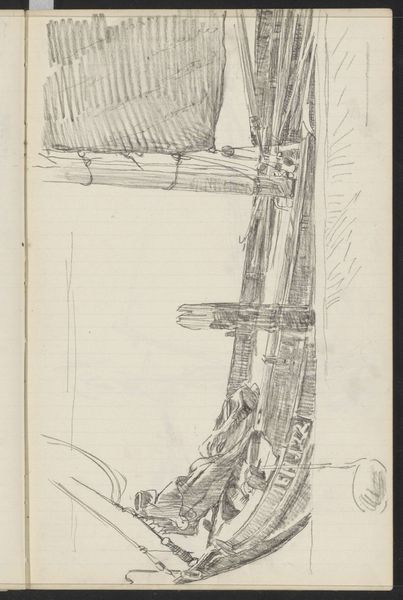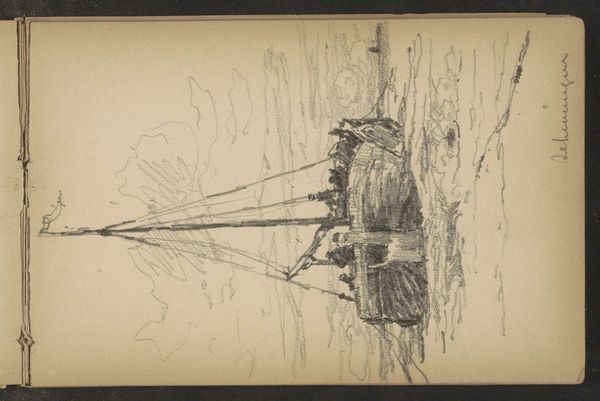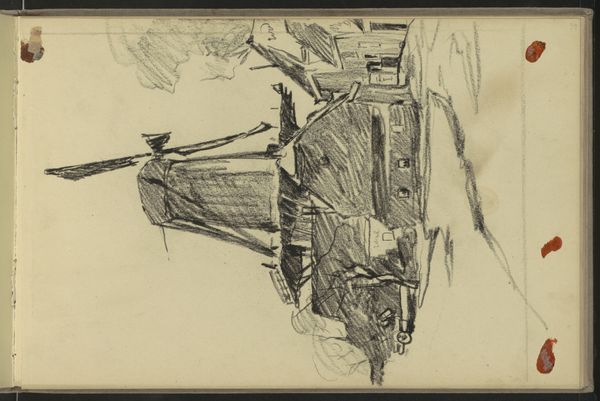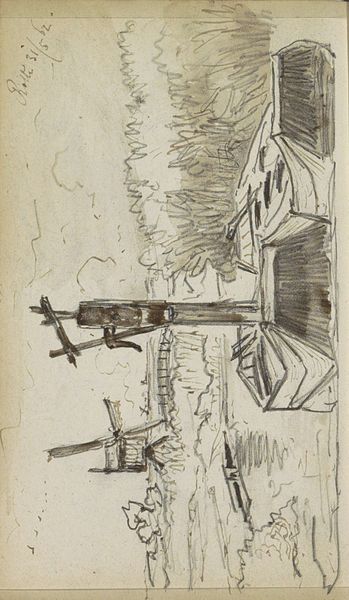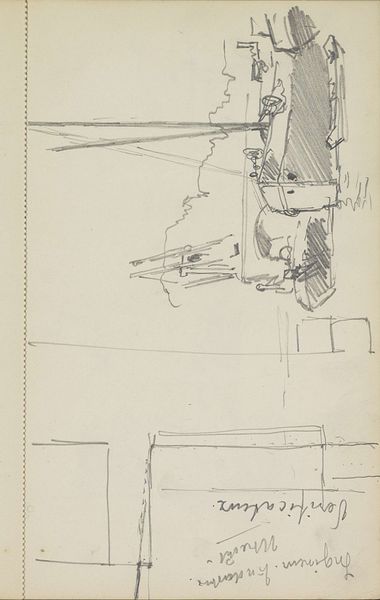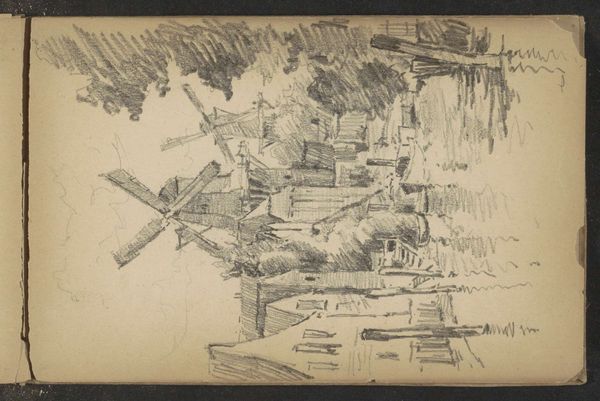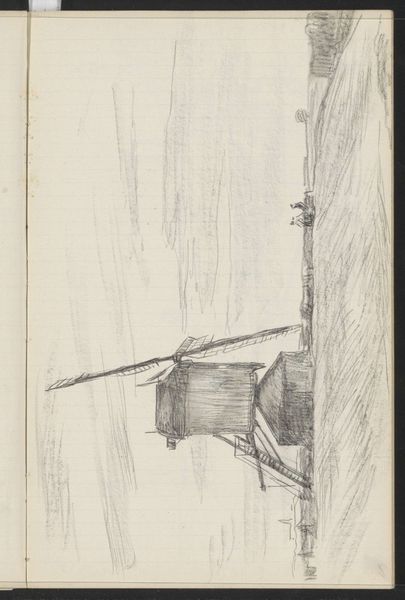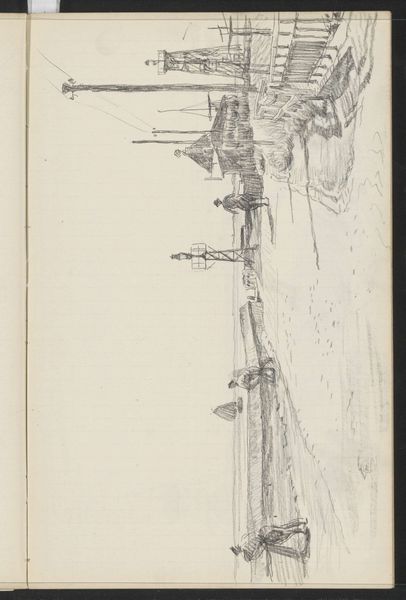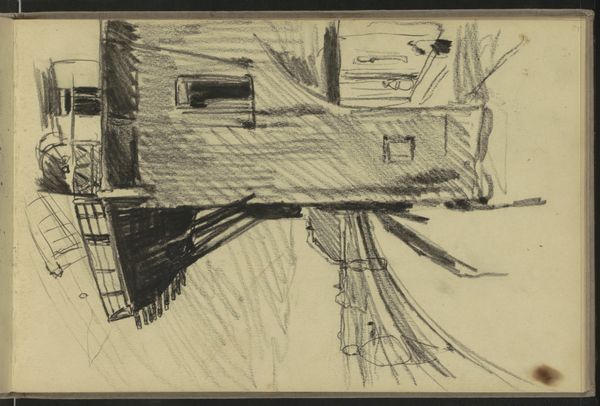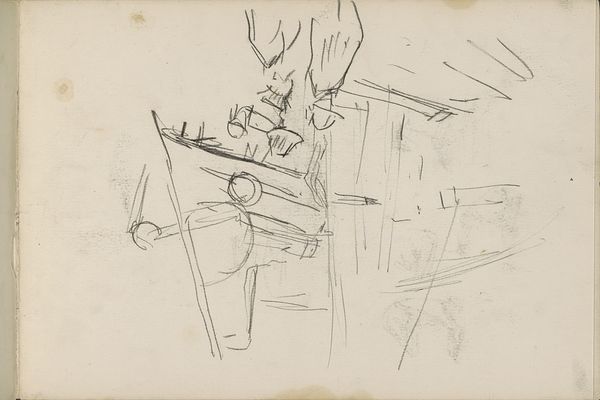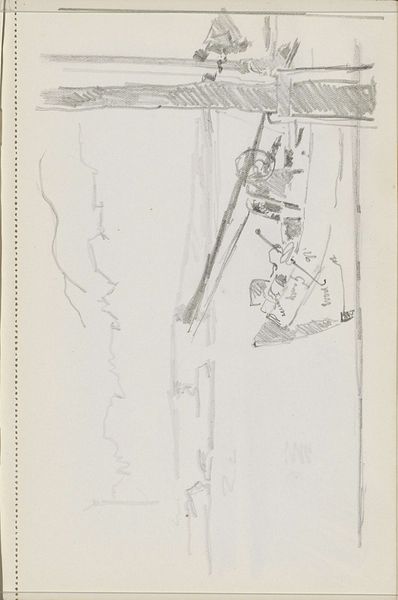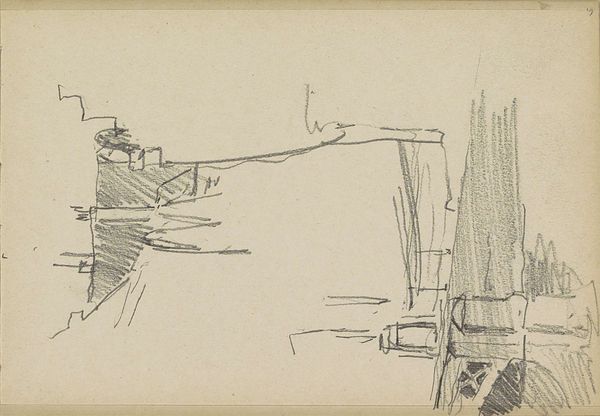
Gezicht op de molen Rijn en Lek te Wijk bij Duurstede Possibly 1906 - 1909
0:00
0:00
Copyright: Rijks Museum: Open Domain
Curator: Here we have Willem Witsen’s “Gezicht op de molen Rijn en Lek te Wijk bij Duurstede,” likely created between 1906 and 1909, a sketch rendered in pencil and ink. What’s your immediate take? Editor: Stark. Almost brutal in its directness. The composition feels unfinished, raw, even – is it meant to convey an unsettling mood? The subject is so close, imposing and lacking much environmental context, perhaps that is on purpose? Curator: Well, let's consider Witsen's broader social circle. He was deeply involved with the "Amsterdam Impressionism" movement, a group that, in many ways, represented a resistance against industrialization and its effects on Dutch society. Looking at the artist’s style – a snapshot approach from a dynamic angle on a mundane subject, we can view it through the prism of those sociopolitical tensions. What meanings do you see being revealed here? Editor: It strikes me that while stylistically categorized as Impressionist, there is no attempt to idealize the subject, only a strong commitment to truth. With rapid industrial growth threatening traditional Dutch windmills, what is implied by representing its form using sharp, hurried lines? Witsen perhaps encourages viewers to question notions of "progress" through his blunt approach. Curator: That's interesting, particularly the reading that the direct, almost harsh depiction might serve a commentary of its own. His technique seems to reflect both admiration for form but maybe a level of commentary or concern for the landscape of the time. How does he accomplish this sense of immediacy and intimacy? Editor: The lack of sentimentality, the absence of a romantic sunset, these stylistic omissions feel like statements, signaling an engagement with contemporary socio-political conversations. The high-angle viewpoint makes me feel like a spy; peering at an environment and moment not readily intended for viewing or contemplation. Curator: This work encapsulates much of what we observe in Witsen’s output – he's presenting his subjects not simply as they appear, but how they exist within the landscape of cultural shifts that define not just a geography but, very deeply, an identity. Editor: This piece has become, for me, a poignant meditation on how the personal intersects with broader cultural anxieties – the artistic value resides precisely in what the style says, more so than what the actual physical subject conveys.
Comments
No comments
Be the first to comment and join the conversation on the ultimate creative platform.
